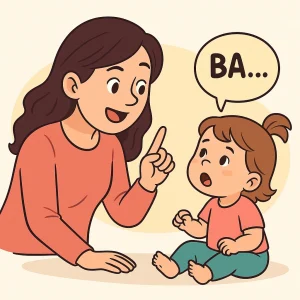Mastering the ‘SH’ Sound: Easy Techniques and Tips
By Rajini D
Last Updated: March 29, 2024
Welcome to the world of clear communication, where every word counts, and the clarity of your speech can open doors to new opportunities and boost your confidence in unimaginable ways. At Wellness Hub, we understand that the journey to eloquent speech is paved with challenges, some of which might seem insurmountable at first. One such challenge many encounter is mastering the ‘SH’ sound, a pivotal element of English pronunciation that, if not articulated correctly, can lead to misunderstandings and a lack of confidence.
The ‘SH’ sound is a common stumbling block for both native speakers and those learning English as a second language. It’s a sound that requires a delicate balance of tongue placement, lip rounding, and breath control, and getting it just right can feel like a feat. But why does this matter? In the grand scheme of things, clear pronunciation is not just about being understood by others; it’s about expressing yourself with confidence and precision. It’s about making sure your voice is heard, loud and clear, in every conversation, presentation, and interaction you engage in.
Understanding the ‘SH’ Sound
What Exactly Is the ‘SH’ Sound?
Imagine the gentle hush of leaves rustling in the breeze or the quiet request for silence in a library—this is the ‘SH’ sound, a whisper of sound that plays a pivotal role in English pronunciation. It graces the beginnings, middles, and ends of words, crafting the nuances of language that differentiate “ship” from “sip,” “fish” from “fizz,” and “bash” from “bag.”
Also Read: Speech and Language Therapy Difficulties faced by Autistic Children.
How Is the ‘SH’ Sound Produced?
Producing the ‘SH’ sound is a delicate ballet of mouth positioning:
- Tongue Placement: The front of the tongue floats just below the roof of the mouth without touching it, creating a wide groove down the center of the tongue.
- Lip Formation: Lips round slightly as if preparing to blow out a candle or deliver a quiet “shush” to a friend.
- Breath Control: Air is gently pushed out over the tongue, through the rounded lips, creating the soft, hissing sound characteristic of ‘SH.’
This might sound like a meticulous process, but think of it as shaping your mouth and breath to whisper a secret. The ‘SH’ sound is about subtlety and precision, a testament to the nuanced beauty of spoken language.
Why Master the ‘SH’ Sound?
Mastering the ‘SH’ sound is more than a linguistic achievement; it’s a key to clear and effective communication. Mispronouncing this sound can lead to confusion or misunderstandings—imagine mixing up “sheet” and “seat” in a conversation. Moreover, the ‘SH’ sound is ubiquitous, appearing in numerous everyday words, making its correct articulation essential for anyone aiming to speak English clearly.
Also read: Articulation Therapy Tips: Perfecting The S And SH Sounds
The Importance of Mastering the ‘SH’ Sound
Why Is the ‘SH’ Sound So Crucial?
The ‘SH’ sound is a cornerstone in the architecture of English pronunciation. It features in an array of words that we use daily, from expressing emotions (e.g., “wish” and “ashamed”) to performing routine tasks (e.g., “wash” and “push”). Mispronunciation can lead not only to misunderstandings but also to the unintended alteration of meanings, which could potentially change the tone of conversations or even result in comedic, if not embarrassing, miscommunications.
When Do Children Master the ‘SH’ Sound?
Interestingly, the journey to mastering the ‘SH’ sound begins at a tender age. Children typically start to produce the ‘SH’ sound accurately by the ages of 3.5 to 7 years. This wide range reflects the uniqueness of each child’s developmental path as well as the complexity of the sound itself. Achieving proficiency in the ‘SH’ sound is a pivotal milestone in a child’s linguistic development, indicative of their progressing ability to manipulate language to express themselves more clearly and accurately.
Common Mistakes in Pronouncing the ‘SH’ Sound
- Substituting with the ‘S’ Sound: One of the most frequent errors is replacing the ‘SH’ sound (/ʃ/) with the ‘S’ sound (/s/), turning “sheep” into “seep” or “wash” into “was.” This substitution changes word meanings and can lead to confusion in communication.
- Distorting the Sound: Some may struggle with the unique mouth positioning required for the ‘SH’ sound, leading to a distorted output that clearly neither resembles ‘SH’ nor ‘S’. This distortion often occurs due to incorrect tongue placement or insufficient rounding of the lips.
- Blending Unintended Sounds: Occasionally, a hint of a ‘CH’ sound (/tʃ/) sneaks into the ‘SH’ pronunciation, making the output sound choppy or too forceful, as in turning “shoe” into “choo.”
Common ‘SH’ Sound Mistakes & Solutions
| Mistake | Description | Solution |
|---|---|---|
| “S” Sound Substitution | Replacing ‘SH’ with a sharp ‘S’ sound | Focus on rounding lips more and directing air flow over the tongue to create the softer ‘SH’ sound. This involves practicing the positioning of the lips and the tongue until the ‘SH’ sound is distinctly different from the ‘S’ sound. |
| Distortion | ‘SH’ sound is unclear or incorrectly formed. | Check tongue positioning, ensuring it’s not too far forward or back in the mouth. The tongue should be in a neutral position, with the sides slightly raised to narrow the airflow, creating the correct ‘SH’ sound without distortion. |
| “CH” Sound Inclusion | Adding a ‘CH’ sound to ‘SH’ | Practice blowing air smoothly without vocal cord vibration, focusing on a steady airflow. Avoid the temptation to add a ‘t’ sound before the ‘SH,’ which typically results in the ‘CH’ sound. Instead, aim for a continuous, smooth flow of air. |
Explore more on our article 7 Key Techniques for Overcoming Stuttering
How to Identify These Errors
The Mirror Test:
A simple yet effective way to check for the ‘SH’ sound production is the mirror test. Position yourself in front of a mirror and pronounce words containing the ‘SH’ sound. Observe the shape of your lips and the placement of your tongue. For the ‘SH’ sound, your lips should be rounded forward, and your tongue should be slightly retracted with its tip close to, but not touching, the back of your front teeth. If your lips aren’t rounding or if your tongue placement is off, you’re likely making one of the common errors.
The Hand Test:
Place your hand in front of your mouth as you pronounce the ‘SH’ sound. You should feel a steady stream of cool air. If the air feels too forceful, you might be leaning towards a ‘CH’ sound. If there’s minimal air movement, you might be producing an ‘S’ sound instead.
Recording and Playback:
In today’s digital age, recording yourself can be an invaluable tool. Use your smartphone to record your pronunciation of words with the ‘SH’ sound. Playback can reveal subtleties in your pronunciation that you might not notice in real time.
Seeking Feedback:
Sometimes, the ear of a friend, family member, or language expert can catch what you might miss. Don’t hesitate to seek feedback on your pronunciation.
Step-by-Step Techniques to Master the ‘SH’ Sound
Physical Positioning
Tongue Placement:
Start by focusing on your tongue’s position. The tip of your tongue should be close to, but not touching, the back of your upper front teeth. Imagine your tongue as a gentle slope leading down from the roof of your mouth.
Lip Formation:
Your lips play a crucial role in shaping the ‘SH’ sound. They should be rounded and protruded slightly as if you are about to whisper a secret or blow out a candle. This positioning helps direct the flow of air necessary to create the sound.
Listening and Imitating
One of the most effective ways to learn is by listening to the sound done correctly and then imitating it. Listen to recordings of native speakers or use language apps to hear the ‘SH’ sound in various words and contexts. Mimic the sound immediately after hearing it, paying close attention to your tongue and lip placement. Repetition is key; the more you listen and repeat, the more natural the sound will become.
Verbal and Visual Cues
- Verbal Cues: Associating the ‘SH’ sound with a particular cue can reinforce your learning. For example, think of the sound as a gentle “shush,” like you’re asking someone to be quiet. This familiar association can make it easier to recall and produce the sound accurately.
- Visual Cues: Visualizing the sound’s formation can also be helpful. Picture the air flowing over the center of your tongue and out through your rounded lips, creating that soft, hushing sound. Sometimes, watching yourself in the mirror as you practice can reinforce these visual cues, offering real-time feedback on your positioning.
Tactile Cues
Understanding the physical sensation associated with producing the ‘SH’ sound can offer another layer of reinforcement. As you make the sound, place a hand in front of your mouth to feel the gentle flow of air. This tactile feedback can help ensure you’re producing the sound correctly. If the airflow feels too forceful, you might be veering into ‘CH’ territory; if it’s too weak, you might be closer to an ‘S’ sound.
Read more: Toddler Development: Occupational Therapy Strategies
Fun Exercises and Activities
- ‘SH’ Sound Scavenger Hunt: Create a list of items around your home or in a magazine that contain the ‘SH’ sound and have a scavenger hunt. For children, this can be an exciting game, and for adults, it can be a more mindful exercise in observation and pronunciation.
- Story Time with ‘SH’: Write or find short stories that heavily feature words with the ‘SH’ sound. Emphasize and exaggerate the ‘SH’ sound as you read aloud. This can be a fun bedtime activity for kids or a practice exercise for adults.
- The Whisper Game: Use the ‘SH’ sound to practice whispering phrases or sentences to one another in a game of telephone. It’s a playful way to focus on how the ‘SH’ sound modulates your whisper.
- Sing a Song: Find or create songs that include a good number of ‘SH’ sounds. Singing helps with muscle memory and is a joyful way to practice pronunciation.
- Articulation Art: For a more creative twist, draw or paint words that start with or contain the ‘SH’ sound. Associating the visual arts with pronunciation practice can enhance memory and make the learning process more enjoyable.
Learn more about Learn Alphabets with Fun: Engaging Kids & Special Needs
When to Seek Professional Help
Recognizing the Signs
- Persistent Difficulty: If you or your child has been consistently practicing but still struggles to produce the ‘SH’ sound correctly after several weeks or months, it may be time to consult a speech therapist.
- Impact on Daily Life: When mispronunciation affects school performance, professional interactions, or social communication, seeking assistance from a speech-language pathologist (SLP) can help address these challenges effectively.
How Wellness Hub Can Help
At Wellness Hub, we understand the importance of clear communication for overall wellness. While we’ve provided you with strategies and exercises to practice at home, we also recognize the value of professional guidance. If you need additional support, we encourage you to explore our resources or consult with a speech therapist. Our goal is to support you on your journey to confident communication every step of the way.
Weekly ‘SH’ Sound Practice Plan
| Day | Exercise | Duration |
|---|---|---|
| Monday | Mirror Practice | 5 mins |
| Tuesday | Listening & Imitation | 10 mins |
| Wednesday | Verbal and Visual Cues | 5 mins |
| Thursday | Tactile Feedback | 5 mins |
| Friday | Fun Exercise | 10 mins |
| Saturday | Storytime with ‘SH’ | 15 mins |
| No set time; a casual review | Review & Relax | No set time; casual review |
Conclusion
As we wrap up our exploration of mastering the ‘SH’ sound, it’s crucial to remember the journey’s core elements: understanding its importance in English pronunciation, recognizing and correcting common errors, and engaging in effective, enjoyable practices. These steps are not just about linguistic accuracy; they’re about fostering confidence and clarity in communication. Whether you’re practicing alone, with a loved one, or considering professional guidance, each effort you make is a valuable stride toward eloquence.
We at Wellness Hub are committed to your journey toward clear communication and overall well-being. We encourage you to visit our website for more insights and resources that support your path to improved speech clarity and wellness. Remember, clear communication is a powerful tool for connection, expression, and confidence. Keep practicing, stay patient, and cherish every bit of progress along the way.
Frequently Asked Questions:
1. What are some effective techniques to master the ‘SH’ sound in English pronunciation?
Mastering the ‘SH’ sound involves several key techniques, including proper tongue and lip positioning, listening and imitating correct pronunciations, using verbal and visual cues, and employing tactile cues to ensure accurate sound production. Consistent practice and patience are essential for success.
2. How can I identify common errors in pronouncing the ‘SH’ sound?
Common errors include substituting the ‘SH’ sound with an ‘S’ sound, distorting the sound, or blending unintended sounds. Utilizing mirror exercises, recording and playback, and seeking feedback can help identify and correct these mistakes.
3. Are there fun exercises to practice the ‘SH’ sound at home?
Yes, incorporating fun activities such as a ‘SH’ sound scavenger hunt, reading stories with ‘SH’ words, engaging in whisper games, and creating articulation artwork can make home practice enjoyable and effective for both children and adults.
4. When should I consider seeking professional help for ‘SH’ sound pronunciation issues?
Consider professional help if there’s persistent difficulty, frustration, or negative impact on daily communication. A speech therapist can offer personalized strategies and support to overcome challenges in pronouncing the ‘SH’ sound effectively.
5. How often should I practice the ‘SH’ sound for improvement?
Daily practice, even for just a few minutes, is crucial for progress. Start with the sound in isolation, gradually moving to words, phrases, and sentences, maintaining a routine that encourages gradual improvement.
6. Why is mastering the ‘SH’ sound important for communication?
Clear articulation of the ‘SH’ sound is essential for effective communication, preventing misunderstandings and boosting confidence in speaking. It’s a vital component of expressive and comprehensible speech.
7. Where can I find more resources on enhancing speech clarity?
Wellness Hub provides extensive resources and guidance for improving speech clarity and overall wellness. Visit our website for strategies, tips, and support to refine your communication skills and enhance your well-being.
8. Can mastering the ‘SH’ sound impact my social and professional life?
Absolutely. Achieving clarity in pronouncing the ‘SH’ sound can significantly enhance social interactions and professional communications, reducing misunderstandings and fostering confidence. Clear speech is crucial for making strong first impressions and maintaining effective dialogue in all areas of life.
9. What role does patience play in learning to pronounce the ‘SH’ sound correctly?
Patience is pivotal in the process of mastering the ‘SH’ sound, as progress in pronunciation skills often occurs gradually. Recognizing and celebrating small improvements over time can motivate continued practice and lead to significant long-term success.
10. How does incorrect ‘SH’ sound pronunciation affect comprehension and communication?
Incorrect pronunciation of the ‘SH’ sound can lead to confusion and misinterpretation of words, affecting the listener’s comprehension. This can disrupt effective communication, resulting in misunderstandings that may impact relationships and professional interactions.
About the Author:
Rajini Darugupally
M.Sc., Speech-Language Pathologist (9+ years of experience)
Rajini is a passionate and dedicated Speech-Language Pathologist with over 9+ years of experience, specializing in both developmental speech and language disorders in children and rehabilitation in adults. Driven by a desire to empower each individual to find their voice, Rajini brings a wealth of experience and a warm, genuine approach to therapy. Currently, at Wellness Hub, she thrives in a team environment that values innovation, compassion, and achieving results for their clients.
Book your Free Consultation Today
Parent/Caregiver Info:
Client’s Details:
* Error Message









